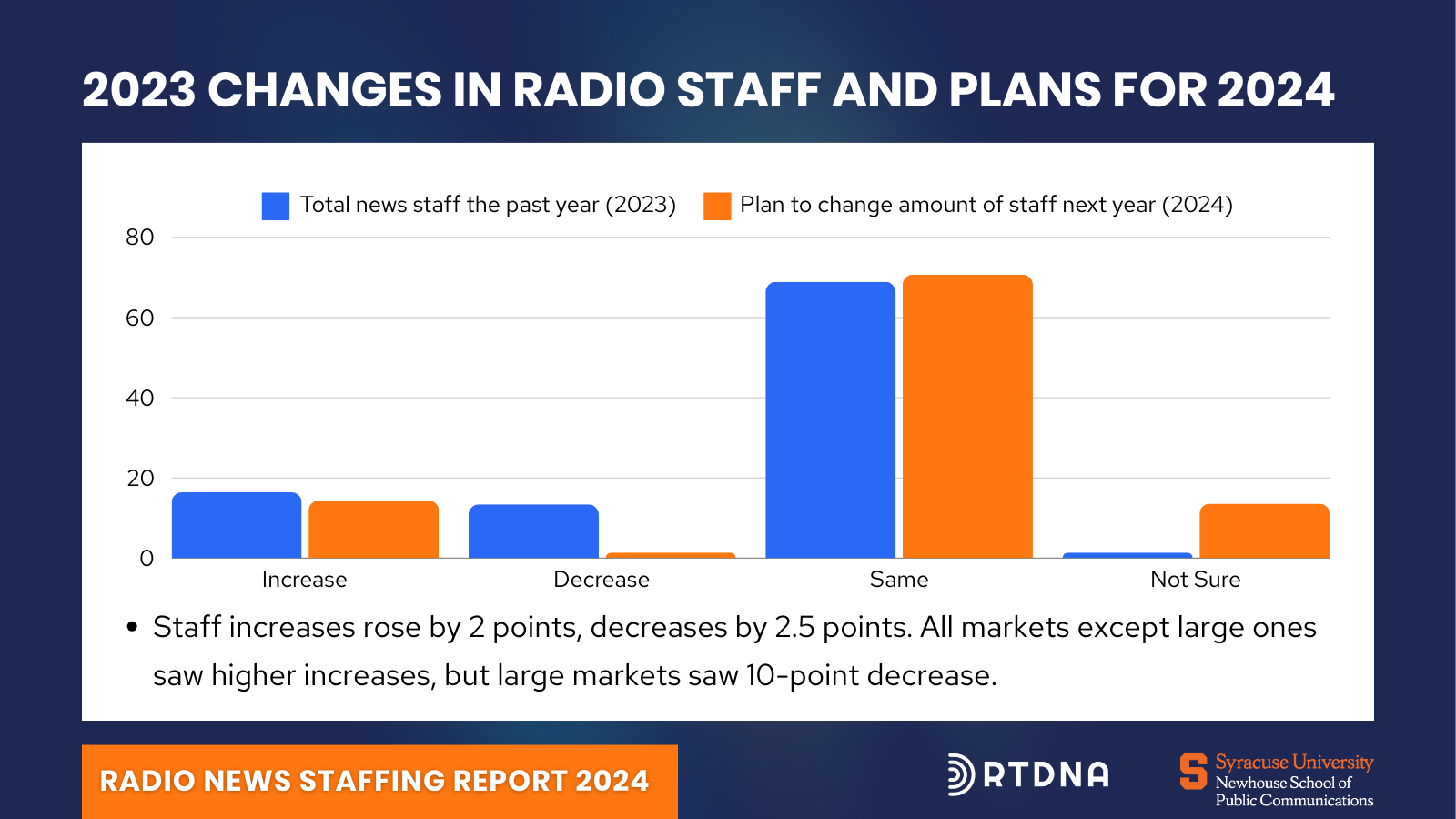Radio staffing continues to grow with modest increases

By Bob Papper and Keren Henderson
The latest RTDNA/Newhouse School at Syracuse University Survey shows the typical (median) radio news operation has a full-time news staff of 2 for the second year in a row. The average is approaching 4 (3.7). Once again, the larger staff results from public radio. Commercial radio has an average of 2.7 staffers, but the median remains at 1. Non-commercial radio averages 6.7 with a median of 3.
The increases vary across the board. Large and medium markets are up in average staff size; major and small markets each slipped by 0.2. The median staff size is up in major and large markets and remains the same in medium and small markets. Part time mostly is up or even. Overall, mostly a win.
The overall staff size difference between commercial and non-commercial stations remains steady at around 3:1, non-commercial to commercial, but non-commercial stations are more likely to be found in large and major markets.
As usual, the larger the market, the larger the news staff is likely to be.

The problem isn’t anywhere near the level as it is in TV, but staff burnout in radio is relatively high — with 41.4% of news directors and general managers saying they see more evidence of burnout this year. The problem was the worst in major markets (58.5%) and in the largest newsrooms (62.9%). Non-commercial stations were higher than commercial ones, but the difference was just 4 points.

About the Authors
Bob Papper is Research Professor of Broadcast and Digital Journalism at Syracuse University and has worked extensively in radio and TV news.
Keren Henderson is Associate Professor of Broadcast and Digital Journalism at Syracuse University.
This research was supported by the S. I. Newhouse School of Public Communications at Syracuse University and the Radio Television Digital News Association.
About the Survey
The RTDNA/Newhouse School at Syracuse University Survey was conducted in the fourth quarter of 2023 among all 1,876 operating, non-satellite television stations and a random sample of 4,764 radio stations. The television response rate is different for every question, but Valid responses came from as many as 1,387 television stations (73.9%) and 631 radio news directors and general managers representing 1,902 radio stations. Some data sets (e.g. the number of TV stations originating local news, getting news from others and women TV news directors) are based on a complete census and are not projected from a smaller sample.
